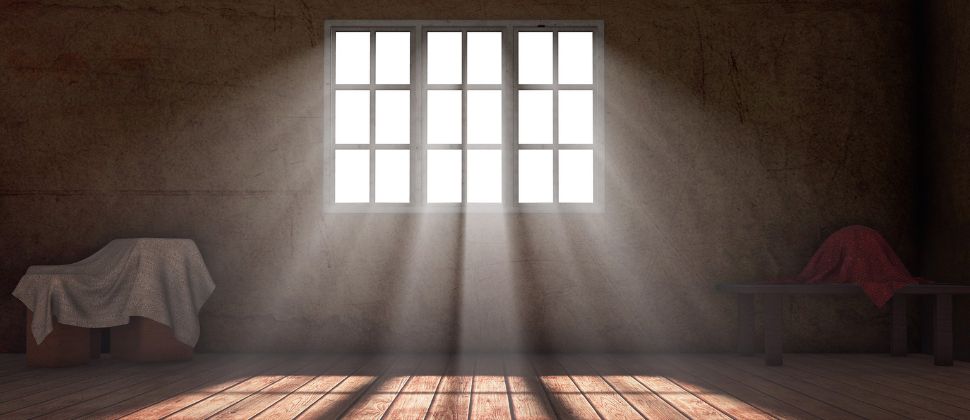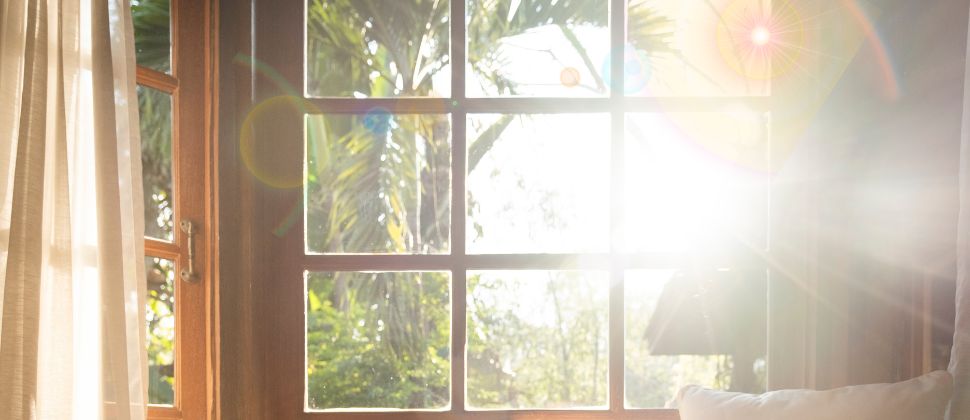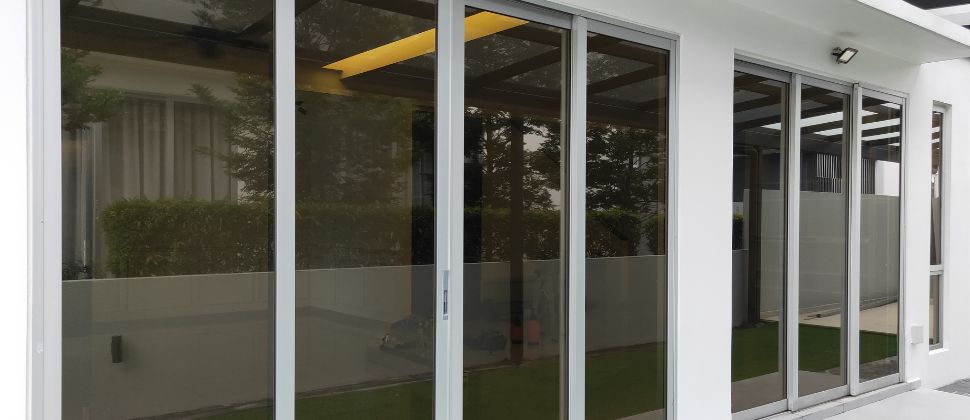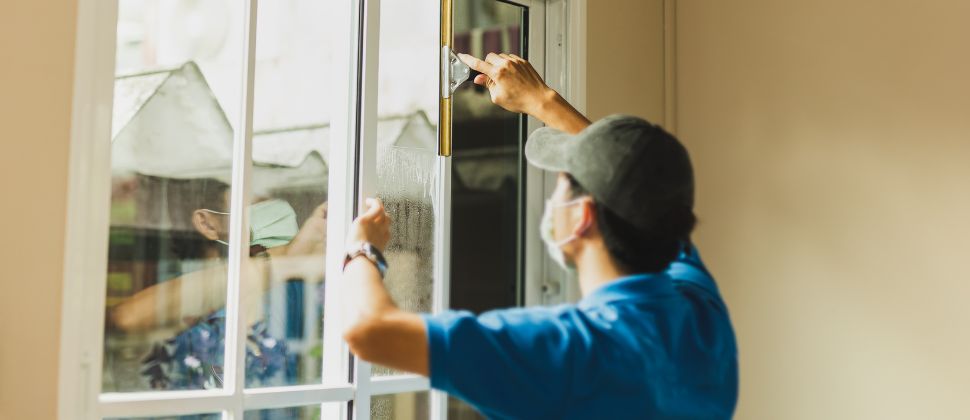Are you tired of dealing with uncomfortable temperatures, excessive glare, and high energy bills in your home? Look no further than window tinting – a solution that can revolutionize your living space. Window tinting offers a range of benefits, from enhancing comfort and style to improving energy efficiency. By reducing heat transfer, blocking harmful UV rays, and minimizing glare, window tinting creates a more comfortable and enjoyable environment while also adding a touch of elegance to your home.
In this blog post, we will delve into the advantages of window tinting and explore how it can transform your home into a haven of comfort, style, and energy efficiency.
1. Enhanced Comfort

The comfort level in your home is significantly increased by window tinting, which has benefits beyond just looks. Tinted windows aid in maintaining a comfortable indoor temperature by limiting the amount of heat that enters through the windows. This results in a cooler atmosphere during the summer’s sweltering days, cutting down on the need for overly aggressive air conditioning and eliminating uncomfortable heat buildup in your home. Similar to how it helps to maintain warmth in warmer months by reducing heat loss through the windows, window tinting also contributes to a warm and welcoming environment during the winter months.
2. Improved Energy Efficiency

Window tinting’s effect on energy efficiency is one of its most noteworthy advantages. Tinted windows help with insulation by minimizing heat transmission, which increases your home’s energy efficiency. Your heating and cooling systems can work more effectively if there is less heat leaking in or coming out of the windows. Energy use is decreased, and utility costs are decreased as a result. Window tinting serves as an extra layer of insulation for your windows, which helps to keep a stable temperature all year round and minimizes the need for unnecessary heating or cooling.
3. UV Ray Protection

It’s crucial for protecting your property and yourself from the damaging effects of UV radiation. By filtering up to 99% of the UV rays from the sun, window tinting offers a fantastic alternative. The colour and integrity of your furniture, carpets, and artwork must be preserved thanks to this protection. It helps stop the fading, discolouration, and harm brought on by prolonged sun exposure. Additionally, window tinting serves as a barrier to protect you and your loved ones from dangerous UV radiation, lowering the risk of skin ageing and other potential health problems brought on by extended sun exposure.
4. Glare Reduction

A bothersome aspect of excessive glare is when it prevents you from enjoying simple home comforts like watching TV or working on your computer. Window tinting considerably lowers glare by reducing the amount of direct sunlight that enters your home. You can perform a variety of activities without being distracted or bothered by harsh glare as a result, which makes the setting more pleasant and comfortable. Window tinting guarantees a glare-free environment, whether it’s removing glare from your television screen or producing a more relaxing setting.
5. Privacy and Security

Your home should be kept secure and private at all times. By making it more challenging for outsiders to see into your home, window tinting adds an extra degree of seclusion. You may take advantage of the outside sights and sunlight while still protecting your privacy if your windows are tinted. If you reside in a popular area or have windows that overlook public spaces, this is very advantageous. Additionally, tinted windows serve as a deterrent to potential burglars by obstructing the view of your home’s inside and making it more difficult to identify valuable objects within.
6. Aesthetics and Style

Window tinting improves the entire appearance and design of your home in addition to its practical advantages. You may select a window tint that complements both your interior decor and the architecture of the outside thanks to the variety of hues and tints that are available. Window tinting enables you to alter the look of your windows, whether you like a delicate and neutral tint or a bolder and more striking one. Your property will look more upscale and stylish as a result, improving both the interior and outside aesthetics.
Types of Window Tinting: Choosing the Right Option for Your Home

Window tinting is a service that comes in a variety of forms and configurations, each with its own advantages and characteristics. For your home to function comfortably, stylishly, and efficiently in terms of energy use, selecting the appropriate window tint is crucial. We will discuss several window tinting options in this post and provide you with the information you need to make a choice that best meets your individual requirements.
Solar Control Window Film:
Homeowners who want to increase comfort and energy efficiency in their residences should seriously consider solar control window film. In order to keep solar heat from entering your home, this kind of window tinting is made to block a sizable quantity of it. Solar control window film aids in preserving a cooler interior temperature throughout the hot summer months by minimizing heat transfer through the windows. As a result, there will be less need for air conditioning, which will result in less energy being used and lower utility costs. The dangerous UV rays that can eventually discolour furniture, flooring, and artwork are also protected with solar control window film. By blocking up to 99% of UV rays, this type of tinting helps preserve the color and integrity of your belongings while creating a more comfortable living environment.
Decorative Window Film:
Decorative window film is the ideal option if you want to improve both elegance and seclusion in your home. Decorative window film lets you personalize the look of your windows and add a distinctive touch to your interior décor thanks to the variety of patterns, designs, and textures that are offered. The options for decorative window film are virtually limitless, whether you prefer frosted patterns, geometric motifs, or even personalized artwork. This kind of tinting not only adds to style but also offers seclusion by blocking out outside views. It is perfect for bathrooms, bedrooms, and other places where privacy is important since it lets natural light into your space while keeping visitors from seeing inside.
Privacy Window Film:
Homeowners who prefer seclusion without compromising natural light might use privacy window film as a sensible alternative. In order to keep others from looking into your house, this form of window tinting gives your windows a frosted or tinted appearance. In densely populated areas or in locations where neighbours are close by, privacy window film is especially useful for homes. You may keep your sense of isolation while taking advantage of the natural light and stunning vistas. Privacy window film offers an efficient option, whether you’re looking to make your bedroom a tranquil haven or increase privacy in your office.
Security Window Film:
For your windows and house, security window film adds an additional layer of protection. Glass shards are kept together in the event of fracture by the film’s thickness and durability. Security window film strengthens the windows, which makes it more difficult for potential burglars to enter your property. For homeowners who are worried about security, it serves as a deterrent to unauthorized entrance and offers peace of mind. The protection provided by security window film also extends to extreme weather conditions. It increases your family’s safety by lowering the risk of broken glass, lowering the possibility of injury from flying objects, and preventing injuries.
Low-E Window Film:
Low-emissivity (Low-E) window film is an environmentally friendly choice that aids in controlling the temperature in your home. It functions by reflecting a sizable quantity of infrared heat—inward in the winter and outward in the summer. Your home will stay warmer in the winter and cooler in the summer thanks to low-E window film’s ability to limit heat transfer through the windows by improving insulation. Because of the increased energy efficiency and less dependency on heating and cooling systems, energy costs are reduced. Additional advantages for your comfort and well-being include the reduction of glare and the blocking of dangerous UV rays provided by low-E window film.
Window Tinting Maintenance Tips
Once you’ve invested in window tinting for your home, it’s important to maintain it properly to ensure its longevity and optimal performance. Proper maintenance will not only keep your window tint looking great but also help it to continue providing the desired benefits such as heat reduction, privacy, and UV protection. Here are some maintenance tips to keep your window tinting in top condition:
Avoid Cleaning Too Soon: Giving window tinting some time to cure properly after installation is essential. The specific time frame may change based on the type of tinting applied, but it usually takes approximately a week. In order to prevent disrupting the adhesive and causing peeling or bubbling, avoid cleaning the windows during this curing period.
Use Gentle Cleaning Methods: Choose mild cleaning techniques when it comes time to clean your window tinting to prevent damaging the film. Start by cleaning the windows with a mild soap or window cleaner and a soft, non-abrasive cloth or sponge. The tinting should not be damaged by abrasive cleaners, strong chemicals, or other rough materials. Avoid using too much pressure as you gently wipe the surface in either a vertical or horizontal motion.
Beware of Sharp Objects: Sharp objects can scratch or pierce the film on tinted windows, so be careful while putting them nearby or moving them. Keys, rings, and sharp-edged cleaning implements are examples of such things. Ensure that there are no objects that could harm the tinting when opening and closing windows.
Use Microfiber Cloths: After cleaning, use microfiber cloths to dry the windows. These are gentle and lint-free, guaranteeing a finish that is streak-free without leaving behind fibers or lint that might detract from the appearance of the tinting. Microfiber towels dry the film thoroughly and damage-free while being kind to the surface.
Avoid Ammonia-Based Cleaners: Cleaning agents with an ammonia basis can be hard on window tinting and may eventually cause it to degrade. Ammonia-based cleaners should not be used as they may weaken the adhesive qualities of the film and cause it to bubble or peel. Choose cleansers that are designed especially for window tinting or those that the manufacturer suggests.
Regular Inspection: Keep an eye out for any damage, such as peeling, bubbling, or discoloration, on your window tint from time to time. To avoid further harm and keep the tint working properly, take immediate action if you notice any problems. If you need repairs or have any worries about the condition of your window tinting, speak with a professional tinting specialist.
Conclusion
Homeowners can gain a variety of advantages from window tinting, such as improved comfort, style, and energy efficiency. Homeowners have a variety of alternatives for window tinting, including sun control film, cosmetic film, privacy film, security film, and low-E film. Window tinting controls the temperature inside, blocks dangerous UV rays, offers privacy, lessens glare, and increases security. In addition, it offers long-term energy savings while enhancing the aesthetics of your house. The lifetime of window tinting is ensured by appropriate maintenance.



